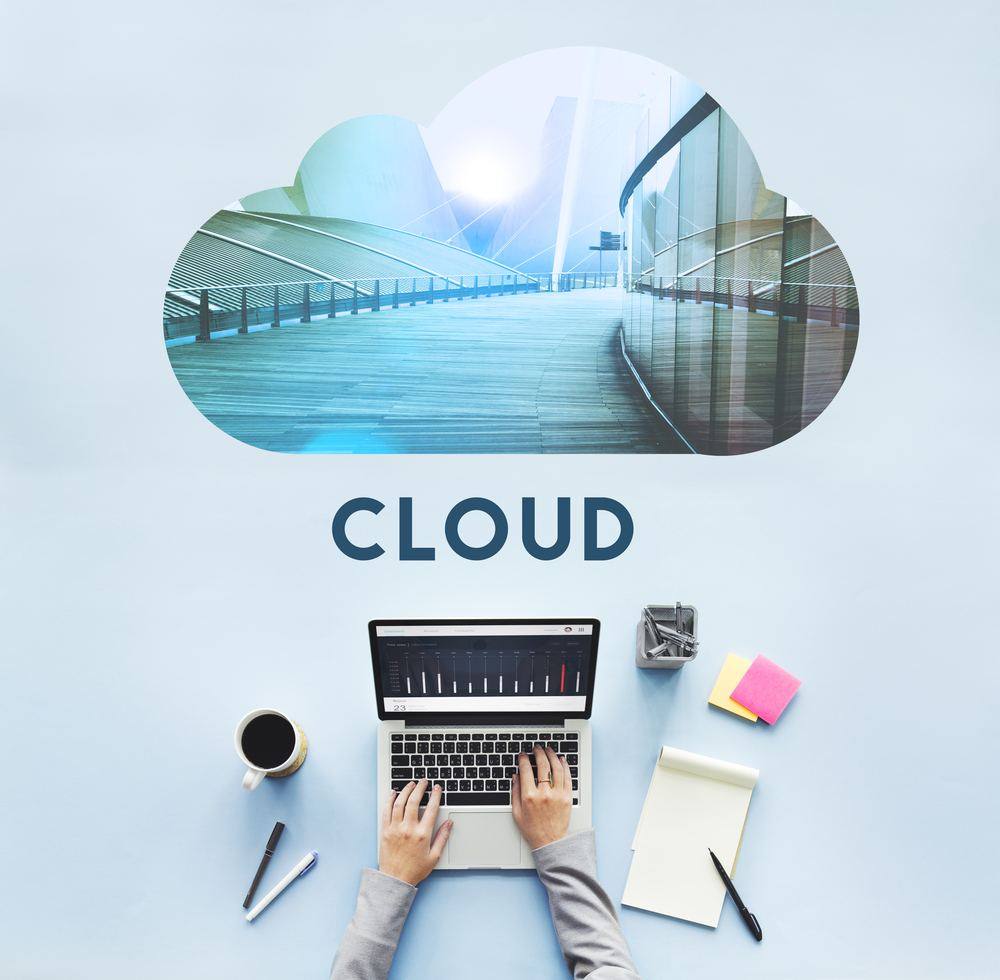Tips For Setting Up And Securing A Hybrid Cloud Environment

Cloud computing is the new normal. However, setting up and securing a hybrid cloud environment can be challenging for IT professionals with no prior experience in the cloud.
A hybrid cloud environment provides a balanced solution that combines the benefits of on-premises infrastructure with the flexibility and innovation offered by cloud services. It allows businesses to tailor their IT strategy to specific needs, ensuring a dynamic and efficient IT infrastructure.
However, integrating on-premises systems with various cloud services can be complex. Different technologies, platforms, and APIs may require extensive customisation and integration efforts.
Typical bottlenecks that IT teams experience are network issues, managing identities and access controls, keeping resources in sync between on-premises and the cloud, misconfigured cloud settings and consistent monitoring and visibility across hybrid environments is challenging. Standardisation challenges may also affect deployment, monitoring, and troubleshooting procedures.
Another challenge that businesses may face is the skills gap. With all due respect, many experienced IT professionals have only ever worked with on-premise servers. Cloud technologies are a whole new playing field.
It is on the cloud side that managed IT support professionals can provide experience and expertise. In this article, we’re going to walk you through some of the key points you need to be aware of when setting up and securing a hybrid cloud environment.

What are the benefits of a hybrid cloud environment?
Before we get into the nitty-gritty, it’s worth contemplating whether setting up a hybrid cloud environment is the best solution for your business. Hybrid cloud environments are best suited to large enterprises, companies in highly regulated industries, manufacturing and supply chains, e-commerce and retail and firms that deploy a distributed workforce or own satellite offices.
Hybrid cloud environments provide scalability by allowing businesses to dynamically scale their IT resources up or down based on demand. On-premises infrastructure can handle baseline workloads, while the cloud can be utilised for burst capacity during peak times.
When a hybrid cloud environment is set up effectively, the infrastructure optimises performance by utilising on-premise resources and taking advantage of cloud storage and sharing facilities to speed up processes and reduce latency.
Cloud technologies also provide you with a robust disaster recovery and business continuity solution. Critical data and applications can be replicated to the cloud, providing an almost instantaneous backup that gets your business back up and running with minimal downtime.
Organisations that store sensitive data and have security concerns may prefer to keep certain workloads on-premises to maintain greater control over their infrastructure. If nothing else, this solution gives you peace of mind.
Hybrid clouds enable businesses to tailor security measures to specific workloads and data types without relying solely on third-party technologies,
Setting Up And Securing A Hybrid Cloud Environment
Setting up and securing a hybrid cloud environment involves a combination of infrastructure planning, network configuration, and robust security measures.
Below, we have detailed the steps and considerations you should take to ensure setting up and securing a hybrid cloud environment is a success,
Define Your Hybrid Cloud Architecture
Before you do anything, clearly define which components of your infrastructure will reside on-premise and what data will be stored in the cloud.
Determine the workloads and applications that will remain on-premises and those that can leverage cloud services. You should also decide whether a public cloud or a private cloud solution is your best option.

The easiest way to do this is to identify critical workloads. Assess your applications and workloads to determine which are mission-critical and must remain on-premises for performance, compliance, or security reasons.
Workloads that can benefit from cloud scalability, flexibility, collaboration and tools should be outsourced. However, complications may arise in cases where private data is required for certain processes. Bear in mind that productivity can be hindered. However, there are usually solutions that help to safeguard relevant, but sensitive data.
You will also need to decide whether to opt for a public cloud or a private cloud.
Public cloud services are more cost-effective and can easily scale to accommodate increased workloads or demand. Resources can be provisioned or de-provisioned quickly based on changing requirements.
Public cloud providers also provide new technologies and services faster than you probably could independently. This allows businesses to leverage cutting-edge technologies and deploy applications rapidly.
However, ready-made tools may have limitations on customisation and configuration, as users are bound by the provider’s offerings and configurations.
Private clouds allow you to tailor the infrastructure to meet your specific needs, providing more control over hardware, network configurations, and overall architecture.
Security concerns also remain an issue when sharing data with a public server. Some businesses may prefer the control of a private cloud for sensitive data.
Private clouds offer greater control over security configurations and data access. This makes them suitable for companies with stringent security and compliance requirements.
Scaling a private cloud may be more challenging and time-consuming compared to the rapid scalability offered by public cloud services. The best option is usually to leverage public cloud services and keep sensitive data on an on-premise server or a private cloud, rather than an on-premise server and a private cloud.
Deploy Hybrid Cloud Management Tools
Hybrid cloud management tools play a crucial role in orchestrating, optimising, and securing IT resources across diverse environments, combining both on-premises infrastructure and cloud services.

Use management tools that provide a unified view of your hybrid environment. This may include cloud management platforms, orchestration tools, and monitoring solutions that work seamlessly across on-premises and cloud environments.
These tools provide a single, centralised console for managing resources across different environments. This unified interface enhances visibility and control, simplifying the overall management experience.
Hybrid cloud management tools provide monitoring and analytics capabilities to track the performance of applications and infrastructure components. This data helps organisations identify bottlenecks, optimise configurations, and ensure optimal performance.
Organisations with a multi-cloud strategy can benefit from tools that facilitate seamless connectivity and interoperability between different cloud providers. This allows for workload mobility and flexibility in choosing the best cloud services for specific use cases.
Many tools offer capabilities for disaster recovery and business continuity planning. This includes automated backup processes, failover mechanisms, and the ability to restore services quickly in case of disruptions.
Leverage Data and Security
Cloud technologies come with a toolkit of security measures that enable you to leverage data in a hybrid cloud environment. Implement encryption for data both in transit and at rest.
Best practices include encrypting mechanisms provided by cloud services and deploying on-premises encryption solutions. Implement robust zero-trust strategies to control user access and permissions.
Ensure reliable and secure network connectivity between on-premises and cloud environments. This enables you to synchronise data between on-premises and cloud environments. Use tools and services that support bidirectional data replication.
Multi-factor authentication for accessing critical systems and services adds an extra layer of security. Although MFA is not a popular choice for employees, enforcing this solution is highly recommended by leading security experts.
Secure API Endpoints
Hybrid cloud architectures rely on seamless communication between on-premises and cloud-based applications and services. APIs facilitate data access and integration between different components in a hybrid environment.
However, cloud services often expose interfaces and APIs that need to be secured. Insecure APIs can be exploited by attackers to gain unauthorised access, manipulate data, or disrupt services.
Securing API endpoints ensures that data transfers between on-premises and cloud systems are protected, preventing unauthorised access or manipulation. APIs should be secured using proper authentication mechanisms. Use API gateways and enforce strict access controls.

Public clouds like Microsoft Azure have APIs built-in. All you need to do is ensure that all API communication is encrypted using HTTPS/TLS to prevent eavesdropping and establish mechanisms to control what actions users or systems are allowed to perform.
Use an API gateway to centralise API management and implement security policies such as authentication, authorisation, and traffic management. This enables you to validate incoming data to ensure it adheres to expected formats and standards. Use output encoding to prevent cross-site scripting (XSS) attacks by sanitising user-generated content.
Regularly Update and Patch Systems
Software and hardware updates and patches often include fixes for known security vulnerabilities. Cyber attackers frequently exploit these vulnerabilities to gain unauthorised access or launch attacks.
We’ve previously written about the importance of patch management so won’t repeat ourselves here, but if you want to understand patch management in more depth, read our article titled “This Is Why You Need Patch Management Services”.
There will also come a time when out-the-box software is no longer supported by tech companies. Outdated systems are more susceptible to data breaches. Regular updates and patches contribute to a robust defence.
Data laws and regulatory bodies mandate businesses to maintain secure and up-to-date systems to protect sensitive data. Regular updates help businesses comply with legal and regulatory requirements, avoiding potential legal consequences and financial penalties.
Setting up and securing your hybrid cloud environment with patch management can be implemented in one of two ways; patch management tools or patch management services.
Leveraging automated patching tools helps to streamline the process. These tools can help schedule and deploy patches across a variety of systems in both on-premises and cloud environments.
Alternatively, take advantage of IT support service providers that can handle the entire patch management process, from assessment to deployment and monitoring.
Minimalise the Risk of Security Threats
While cloud computing offers numerous benefits, it also introduces new challenges and potential security threats. The concentration of large amounts of sensitive data in the cloud makes it an attractive target for cybercriminals.
Data breaches can occur in several areas; weak access controls, insecure application interfaces, misconfigured cloud settings and compromised credentials — usually from user error.
Weaknesses in identity and access management practices, such as lax password policies or inadequate access controls can leave businesses vulnerable.

On the flip side, cloud technologies help to improve IT security with robust logging and monitoring solutions to detect suspicious activities. Cloud technologies deny network access to unauthorised users in real-time and file access to network-authorised users who do not have permission to access information stored in password-protected folders.
The cloud enables IT professionals to leverage automation for security controls and compliance checks. Set up alerts and automated responses for security incidents such as identifying suspicious activity such as forced password access and deleted files.
You can also implement robust logging and monitoring solutions to track user activities and system behaviour. Conduct regular audits to identify and address security vulnerabilities.
One of the most important tasks for securing any IT network, whether a hybrid cloud environment or not is to train your staff on cybersecurity awareness.
The majority of data breaches are caused by human error — mostly by clicking on malicious links sent via email. Phishing remains one of the preferred methods deployed by cybercriminals, but threats are appearing through various other sources as well.
Read out article titled Latest Hacking Techniques Used by Cybercriminals 2023 to get clued up. This is critical information your staff needs to know!
We cannot stress enough how important it is to train employees on security best practices and promote a security-aware culture to minimise the risk of human error.
Cloud IT Support in London
Micro Pro can play a crucial role in setting up and securing a hybrid cloud environment. Our experienced team of specialists help you with the design of the infrastructure and the initial deployment of hybrid cloud infrastructure and ensures seamless integration of on-premises and cloud resources.
Our IT security specialists will also ensure cloud configurations and firewalls are set up correctly, together with activating identity and access controls and implementing encryption, endpoints and patch management service so you meet compliance security standards.
If required, we can also support your in-house team with network management and monitoring the performance and health of both on-premises and cloud-based resources. We use specialised tools to detect issues, ensure optimal resource utilisation, and proactively address potential problems.
Our IT support professionals in London can automate routine tasks and orchestrate workflows, ensuring efficient resource provisioning, scaling, and de-provisioning, handling routine incidents or disruptions


